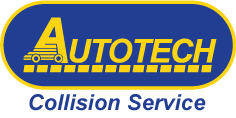Pre-and-post-repair scanning on your car has always been a bit of a sore spot for anybody working in the collision repair industry. Part of the reason for this is because it’s a bit of a new repair procedure, so there’s a cost involved. Your car insurance company wants to spend as little money as possible on repairs and may not want to put up the cost for pre and post-repair-scanning. In fact, the customer might even be required to cover the cost. However, scanning is critical to car repair nowadays and we’re here to explain why.
What Is Vehicle Scanning?
Your car is full of advanced technology, which is why repairs are more complex than they’ve ever been. If your car is needing any level of collision repair, chances are your car will require scanning.
Vehicle scanning is when technicians use an electronic tool to diagnose what needs to be done to your car accurately. When a technician hooks up a scanner to your car’s diagnostic port, several codes will appear to give the technician a vantage point on where to start the repair, known as Diagnostic Trouble Codes, or DTC for short. In some cases, your vehicle’s control modules might require reprogramming or recalibration, depending on what the DTC reads in the scan.
Honda/Acura’s Position Statement on Pre-and Post-Repair Scanning
Car manufacturers will release different repair procedures and position statements so technicians know exactly what to do in the repair process. Car repair is nowhere near what it used to be, even just 5 years ago. If certain steps or procedures are ignored in the repair process, it can cause severe damage to your vehicle.
Manufacturers will also release updated position statements to clear up any confusion during the repair process. Below, you’ll find a position statement Honda/Acura released this past May regarding scanning on any of its vehicles if it was involved in a collision. It’s important to note that Honda/Acura determines a collision as “damage that exceeds minor outer panel cosmetic distortion.”
Honda/Acura’s May 2019 Position Statement stated the following:
- “A preliminary diagnostic scan during the repair estimation phase to determine what diagnostic trouble codes (DTCs) may be present, so proper repairs may be included.
- A post-repair diagnostic scan to confirm that no DTCs remain.
- Any repair that requires disconnection of electrical components in order to perform the repair will require a post-repair diagnostic scan to confirm if the component is reconnected properly and functioning.
- Damage that requires the replacement of body parts will always require a post-repair diagnostic scan.
- Some safety and driver-assistive systems (such as ADAS) will require inspections, calibration, and/or aiming after a collision or other body repairs.”
Another critical aspect of scanning that repairers must be aware of is the ADAS systems won’t display any Diagnostic Trouble Codes during the preliminary scan unless the applicable system is damaged in any way. This is critical for technicians to know this because the ADAS systems in your car are made up of a lot of different sensors in order to perform their designated functions. If any of these sensors are damaged in any way, they won’t be able to properly perform and your risk of getting in an accident significantly increases.
If no DTCs show up for the ADAS systems, calibration may be required. This is an extremely complex repair process that only highly trained technicians are capable of performing. Most technicians who haven’t received adequate training will just “assume” that if nothing appears, noting needs to be done. This is not only a lazy repair practice, but it can also mean that critical aspects of the repair process would be neglected (as you saw above).
Because of the complexity in today’s car repair, each vehicle must have its own unique repair plan. This plan is typically created following the unique set of repair procedures that the manufacturer releases for your exact vehicle, known as OEM repair procedures. These repair procedures instruct a technician the exact way your vehicle should be repaired. OEM repair procedures are the safest and highest quality, though many body shops will ignore these repair procedures in an effort to save time and meet the Insurance company’s deadline. The best auto body shops know the importance of these repairs and know to never cut corners in the repair process.
Let’s look at a vehicle that was purchased sometime over the past five years. This vehicle is probably equipped with some ADAS technology, which is pretty much a standard in most vehicles you see on the roads today. For those of you who don’t know, ADAS is short for Advanced Driver Assistance Systems. Some of the most common ADAS features are:
- Blindspot detection
- Lane departure assist
- Backup camera
- Forward collision warning
OEM repair procedures are so critical when getting your car repaired is to ensure the ADAS features maintain their designated functions. With how necessary these procedures are, you would think that every auto body shop would follow them, right? Unfortunately, most technicians will repair your vehicle out of “experience” instead of following OEM repair procedures because it’s faster and cheaper. The best body shops will never approach a repair this way and only perform OEM repair procedures. Plain and simple.
When Honda/Acura released its position statement on pre-and-post repair scanning, it was to provide technicians added clarification on what to do during these type of repairs. You might have even read our blog post back in May on the importance of diagnostic scans before and after any repairs.
What Does This Mean For New Jersey Honda/Acura Owners?
It’s been a few months since this position statement was released and we realize that none of our customers are keeping up with the latest news in collision repair. Here at Autotech Collision Service, we are always informed so that we know how to better serve our customers here in New Jersey. Scanning affects every customer, which is why we want you to know what certain manufacturers have to say about it (such as Honda/Acura).
You deserve to have a high-quality repair from a body shop that knows the importance of every aspect of collision repair. You want your car to perform well for as long as you have it. This is only going to happen if technicians repair your car the right way, which is the only way we repair cars here at Autotech.
We here at Autotech Collision Service have OEM Certifications with over a dozen different car manufacturers, including Honda’s OEM Certification and Acura’s Pro First OEM Certification. You can trust that our technicians know exactly what they are doing and will only repair your car exactly as the manufacturer instructs us to.
We have also been proudly serving Southern New Jersey for nearly 30 years and aren’t stopping anytime soon. Feel free to call us at (856)-232-1833.
If you’d like to schedule an appointment or to get an online quote, click any of the buttons below! Or, feel free to give us a call at (856)-232-1833. We look forward to hearing from you!



